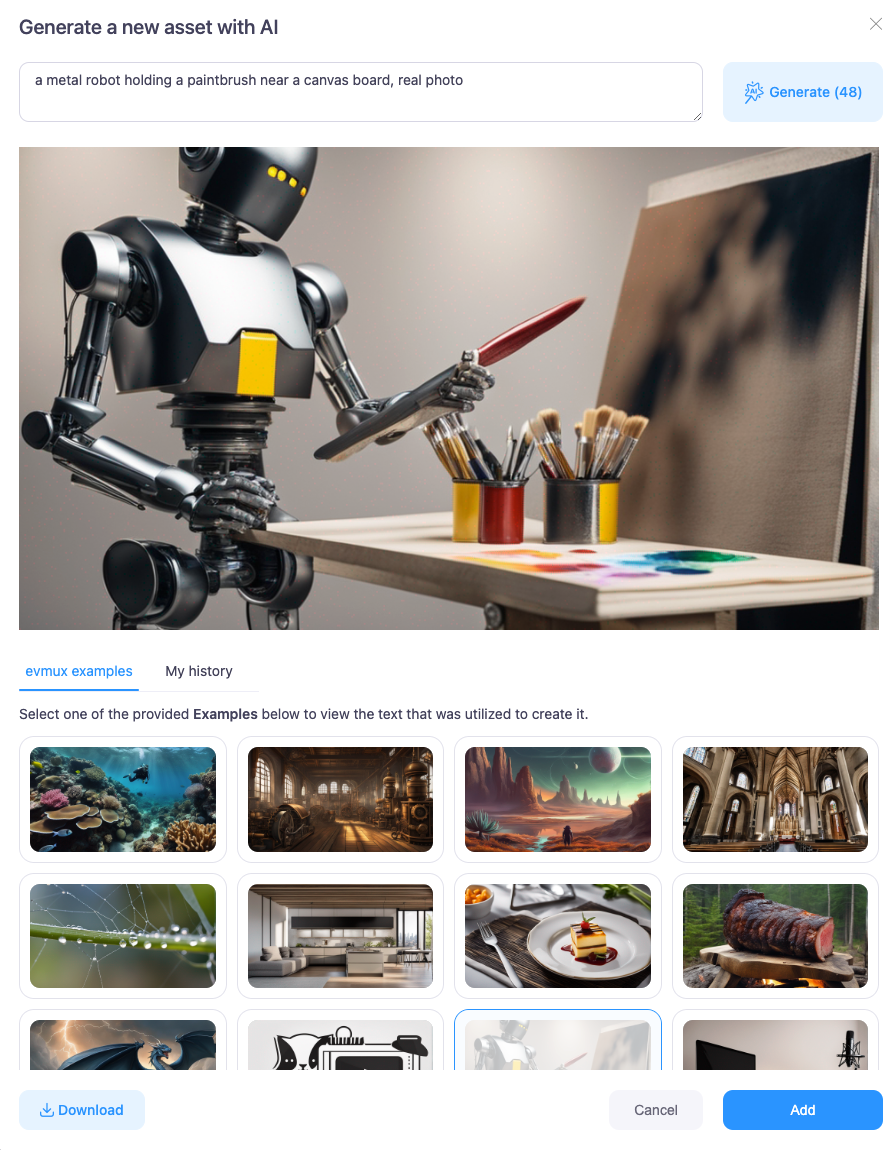
Live streaming has become a trendy way for content creators to engage with their audiences in real-time. From gaming to cooking shows and beyond, live streaming allows creators to broadcast whatever they want and interact with viewers as it happens. Recently, generative AI models like ChatGPT have opened up intriguing new possibilities for integrating AI into live streaming in creative ways.
This blog will explore some of the most promising applications of generative AI in live streaming and how they could transform the viewing experience.
The Rise of Live Streaming
Live streaming refers to broadcasting live video content in real-time over the internet. While live streaming has been around for decades, it exploded in popularity in the last 10 years with the rise of generative AI in live streaming examples like Twitch, YouTube Live, and Facebook Live. On Twitch alone, over 7 million unique creators streamed content in 2021, from gaming to music, sports, and more.
The interactive nature of live streaming sets it apart from traditional pre-recorded media. Viewers can chat with the streamer and each other in real-time, creating a participatory viewing experience. Streamers build communities of engaged followers who regularly tune in and interact. This makes a powerful sense of connection and immediacy that on-demand video lacks.
As live streaming grows, creators seek ways to enhance the viewer experience and make streams more engaging. This is where generative AI comes in – tapping into models like ChatGPT; streamers can integrate interactive, personalized, and dynamic AI capabilities into their broadcasts.
Personalizing Content with Generative AI
One of the most straightforward applications of generative AI in live streaming apps is personalizing and tailoring content for individual viewers. For example, streamers could have an AI assistant that keeps track of regular viewers and generates personalized messages to welcome them when they arrive or recap inside jokes they have with the streamer.
The streamer could even have their AI assistant take custom song requests, with the AI generating lyrics about the viewer to an instrumental backing track. StreamElements’ AI Text2Sing tool hints at these capabilities for integrating generated text into live music.
Beyond personalization, generative AI could allow for fully customized streams based on viewer interests. Imagine an AI system that generates a unique gaming stream for each viewer, with the game content and streamer commentary tailored to their preferences.
Microsoft recently demoed this concept with its Sydney AI assistant, creating a customized fishing stream for each viewer by generating relevant commentary and adapting gameplay. As generative AI advances, individually tailored live streams could become commonplace.
Enhancing Interactivity with Conversational AI
A huge part of live streaming’s appeal is the ability to interact with broadcasters in real-time. Taking this to the next level, generative AI for content creation models like ChatGPT allows for incredibly natural and engaging interactions between streams and viewers.
Streamers could have a ChatGPT-powered AI co-host join their stream to converse with viewers, answer questions, moderate chat discussions, and participate in the stream almost like a human collaborator. The AI could converse knowledgeably on any topic, making viewers feel part of an intimate, friendly discussion.
These conversational abilities also open creative possibilities for interactive storytelling, collaborative writing, and tabletop roleplaying streams where the AI takes on character roles. Chatting with the AI lets Viewers steer a story or gameplay in new directions.
Generating Graphics, Games, and More
In addition to conversational abilities, generative AI can produce a wide range of visual content, augmented reality effects, music, game experiences, and more—all of which can add engaging new dimensions to live streaming.
Streamers could use AI image and video generators to create custom overlays, green screen backgrounds, AR assets, and reactive visuals in real-time during a stream. For gaming content, AI systems like Game Builder could assist by auto-generating new game levels on the fly for endless gameplay variety.
Meanwhile, music-focused streamers can make each broadcast more interactive by using AI to create personalized song lyrics and instrumental tracks in response to viewer input. The possibilities for generative AI to enhance live streams through dynamic, reactive, and customized visuals, audio, and interactivity are endless.
Reimagining Live Entertainment with AI
As generative AI capabilities expand, new paradigm-shifting approaches to live-streaming entertainment built around AI could emerge. For instance, imagine an interactive, choose-your-own-adventure-style streaming show where all the characters are AI-generated.
Or, picture a streaming concert where an AI singer takes fan requests and generates all its vocals, lyrics, and instrumentals on the fly. We could even see AI simulation characters that viewers converse with extensively, forming virtual relationships and essentially human-level AI live streamers.
Risks and Challenges
Despite the intriguing possibilities, integrating generative AI into live streaming also comes with substantial risks and challenges to overcome. A core issue is accountability—streamers must be transparent when using AI to generate content rather than manually creating it. Ethical concerns also arise on how user data is leveraged to train and customize generative models.
Moderating harmful content is another challenge, as AI systems may generate problematic text or imagery during live streams unless adequately constrained. There are also risks that AI could plagiarize or infringe on copyrighted works. As such, streamers must source training data ethically and set proper limitations around AI capabilities.
From a technical standpoint, seamlessly integrating AI generation into live streams in real-time is difficult, given the time constraints and potential for errors or lag. So, performance and reliability issues must be addressed, especially as streams seek to incorporate more ambitious generative techniques.
Despite these hurdles, the core capabilities of systems like ChatGPT underscore the enormous potential of AI to transform live streaming. With responsible implementation, generative AI can take streaming to exciting new horizons.
Conclusion
The integration of generative AI into live streaming is poised to introduce revolutionary new possibilities for both content creators and viewers. Conversational AI, customized content, interactive narratives, reactive visuals, and more could make streams more engaging, participatory, and personalized.
While risks around ethics, reliability, and proper use cases remain, generative AI represents an extremely promising avenue for enhancing live-streaming entertainment. As these models rapidly advance, it is only a matter of time before they become a standard fixture of the live-streaming landscape. The day each viewer gets a personalized AI co-streamer tailored to their interests seems close.
After all, having a simulated friend along for the ride makes everything more enjoyable. With the power of generative AI, the future of live streaming is more interactive, imaginative, and intimate than ever.
